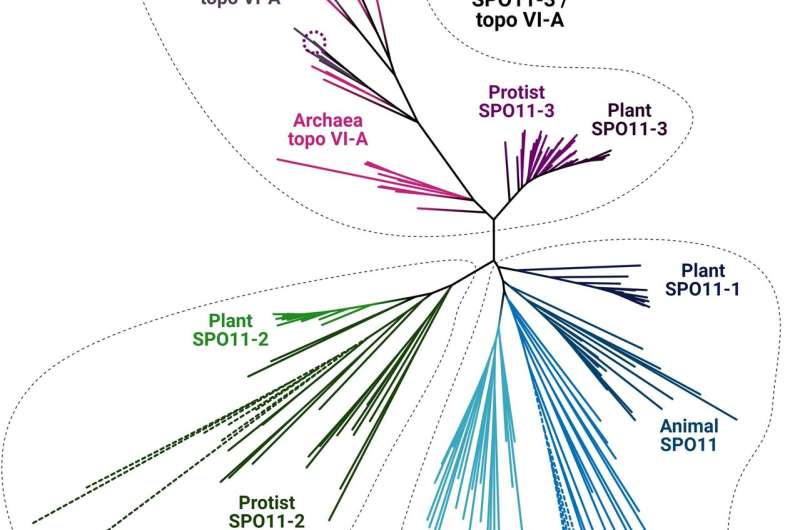This article has been reviewed according to Science X's editorial process and policies. Editors have highlighted the following attributes while ensuring the content's credibility:
fact-checked
trusted source
proofread
DNA Topoisomerase insights hold potential for drug discovery and plant protection

Insights into the function of DNA Topoisomerase VI (Topo VI) may provide a springboard for drug discovery and crop protection.
Researchers in the group of Professor Tony Maxwell used computational techniques to track and trace the role of this key enzyme which helps to regulate DNA across the tree of life.
This analysis delivered a series of findings which improves our knowledge of topoisomerases. The study which appears in NAR Genomics and Bioinformatics the researchers show that:
- Topo VI surprisingly occurs in some species of bacteria.
- Topo VI almost certainly is not present in plasmodial parasites, a group which includes malaria.
- It is now possible, thanks to genetic sequence analysis developed by first author Adam Allen, to distinguish between Topo VI and another enzyme Spo11 which occurs in humans. Lack of understanding has previously meant it was difficult for researchers to distinguish between these enzymes which hampered the possibility of using Topo VI as a target for drugs.
Additionally, the study has clarified some details about the role that Topo VI plays in plant endoreduplication—a process that allows plant cells to grow excessively large. Future scientific questions about how this happens may lead to the development of herbicides that target Topo VI.
The study poses a series of interesting scientific questions the answers to which may provide applications for human and plant diseases says Professor Maxwell.
Professor Maxwell explains, "It's surprising to discover that bacteria have a Topo VI—a question is why they need this when they already have gyrase Topo IV and Topo 1. Understanding this will be important if we are to use Topo VI as an antibiotic target in those bacteria that have the enzyme."
DNA topoisomerases are a class of enzymes that perform fundamental roles in regulating DNA topology and because of this they are major targets for antimicrobial and chemotherapy drugs.
Until recently Topo VI was thought to occur only in archaea, a domain of single celled organisms. It is now known to exist in plants and some other organisms. This study appears to show that it does not occur in plasmodial parasites, and it was not previously known to exist in bacteria.
Ph.D. Student Adam Allen was the first author of this study and used computational techniques to track and trace the role of Topo VI.
More information: Adam M B Allen et al, Phylogenetic distribution of DNA topoisomerase VI and its distinction from SPO11, NAR Genomics and Bioinformatics (2024). DOI: 10.1093/nargab/lqae085
Provided by John Innes Centre



















